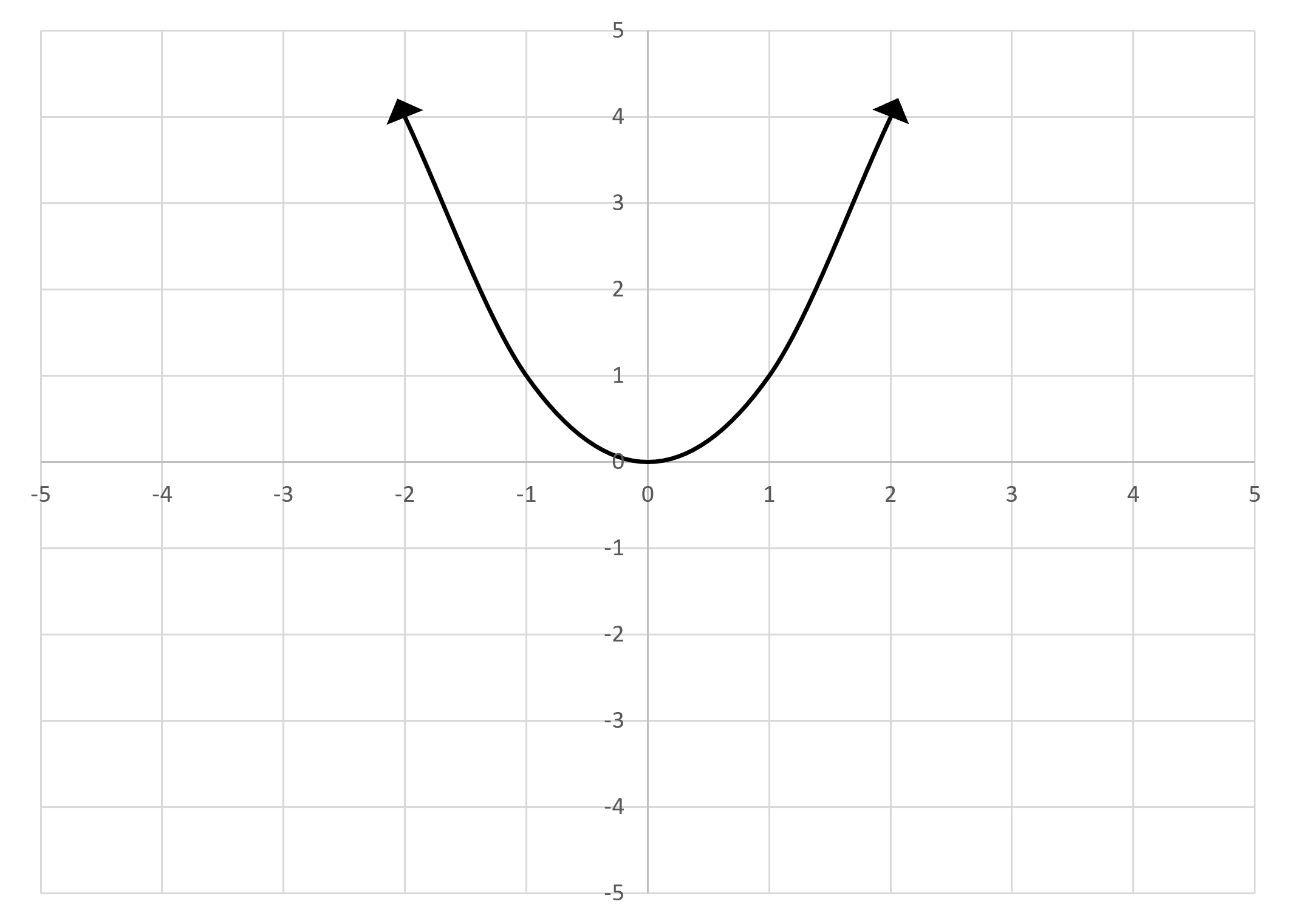A domain is the set of all values of a function. We can determine the domain from a table, from an algebraic function, or a graph. There are multiple ways to write the domain of a function. We will explore each form of a function to better understand this.
Refer to the following table:
| 1 | 2 |
| 2 | 4 |
| 3 | 6 |
| 4 | 8 |
| 5 | 10 |
In the table above, we can see that the values are clearly , , , , and . This is the domain. To write this properly, we have two options:
The first method clearly lists each value in order within curly braces. The second method shows the first and last number of the list within square brackets. It is important to note that we only use the second method with the square brackets when the domain consists of every whole number between the two numbers listed.
Refer to the following function:
Since we are not given a list of what numbers go into the function, we have to determine the values ourselves. The best question to ask is if there are any values that cannot equal in the function. In this case, we know that the denominator of a fraction cannot be , so cannot be . However, could be any other number.
We cannot use the first method mentioned above because there are infinite numbers that could be. So, we have to use the second method with a little modification:
You’ll notice a few differences from the method used with tables. First, the square brackets are replaced with parentheses. Parentheses mean that the value goes up to that number but does not equal the number, like a hollow circle on a graph. The between the two sets of parentheses means “and.” That’s to say that both sets make up the overall domain.
Refer to the following graph:

The arrows in this graph indicate that the curve continues on forever in the direction it is pointing. So, the domain of the curve extends infinitely in the negative direction and infinitely in the positive direction. The domain of the graph is therefore .
The range is the set of all values of a function. Like with the domain, we can find the range of a table, an algebraic equation, and a graph. It is also written in the same way that the domain is written, meaning the primary difference is that it consists of the values in place of the values.
We will use the same examples as above to find the range of each form of a function.
Refer to the following table:
| 1 | 2 |
| 2 | 4 |
| 3 | 6 |
| 4 | 8 |
| 5 | 10 |
The range of the function described by the table is (left curly bracket) 2, 4, 6, 8, 10 (right curly bracket). We cannot use the square bracket method because the values do not consist of every value between the starting and ending value.
Refer to the following function:
We know that we can put any value into this function except for . As approaches zero, the value of increases very high. The same can be said for the negative values associated with the function. We can verify this by remembering how the graph of this function looks. So, the range of this function is .
Refer to the following graph:

The curve extends infinitely in the positive -direction but does not cross the -axis to extend into the negative -direction. So, the range of the graph is . We use a square bracket on the because the function does in fact equal at the lowest point. We use parenthesis on the infinity sign because the function extends into infinity but cannot be equal to infinity.
Sign up for free to take 3 quiz questions on this topic